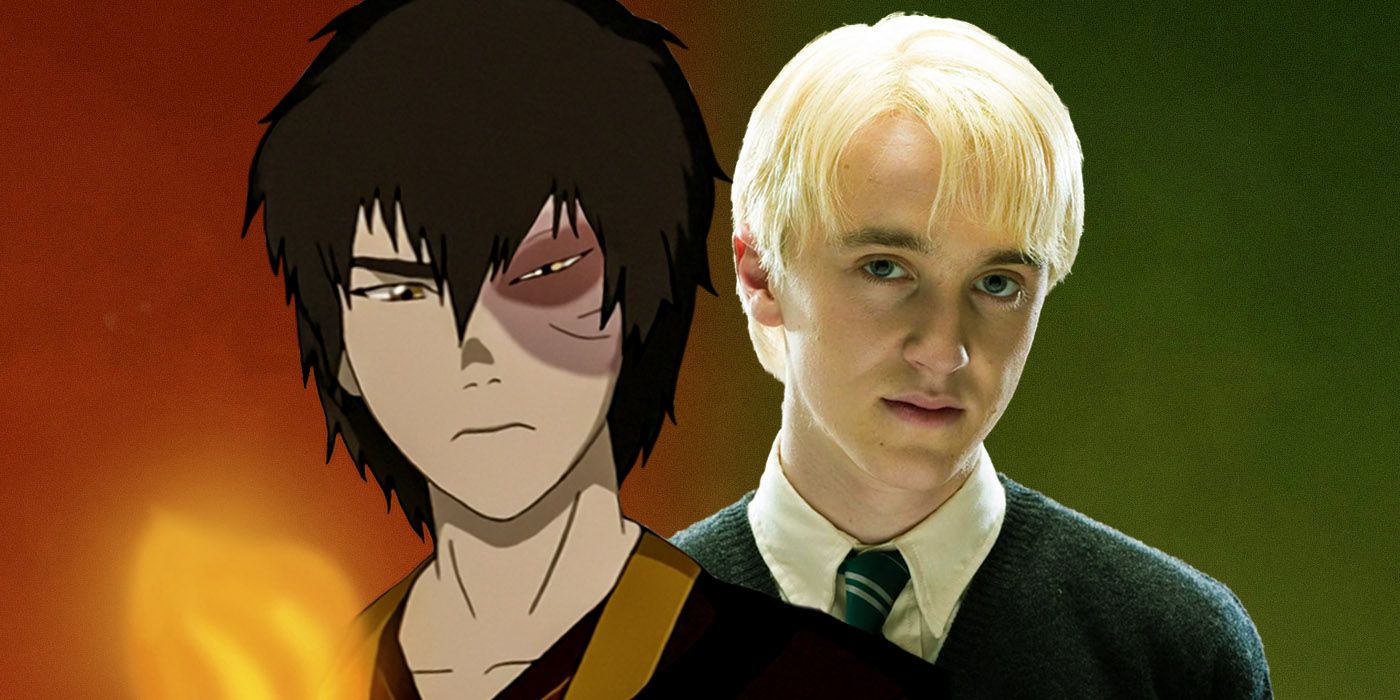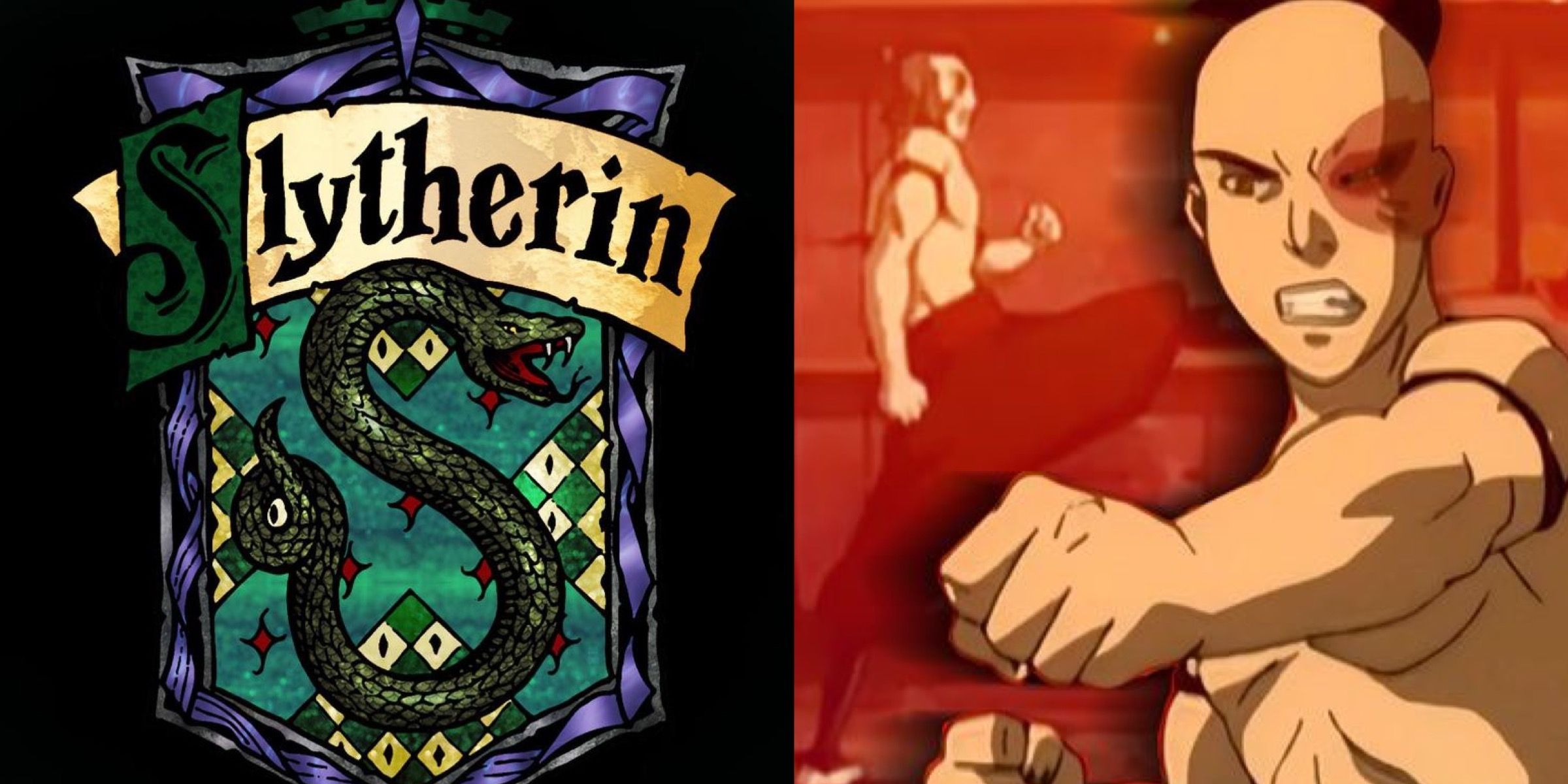Avatar: The Last Airbender treats its Firebenders with far more nuance and complexity than the Harry Potter series does its Slytherins - something that's highlighted by the redemption arcs of Prince Zuko and Draco Malfoy. Both groups are largely associated with villainous figureheads - Fire Lord Ozai and Voldemort, respectively - but while Avatar's most prominent firebenders are shown to grow and change over the course of the story, members of the oft-maligned Hogwarts House are simply never afforded that same opportunity.
In fact, Harry Potter author J.K. Rowling often goes out of her way to inextricably link the Slytherins to the Dark Lord - introducing them, through Hagrid, by asserting that, "There's not a single witch or wizard who went bad who wasn't in Slytherin," and therefore predisposing readers to distrust everyone from that house. Compare that to Katara's voiceover which accompanies the intro to each episode of the Nickelodeon series: "Long ago, the four nations lived together in harmony," suggesting that the Fire Nation's behavior is atypical and, from a historical context, somewhat unexpected. Even as audiences start their journeys into Harry and Aang's worlds, the Slytherins' consistency and the Firebenders' irregularity - and accompanying ability to change - is already implied.
Therefore, it is unsurprising that in the The Last Airbender's series finale, the four nations have returned more-or-less to balance as a redeemed Prince Zuko comes to power and begins to undo the damage inflicted by his father and grandfather. Conversely, the Slytherins have hardly moved toward heroism or atonement by the closing chapters of Harry Potter and the Deathly Hallows - at least not in large part. Perhaps in Rowling's most damning indictment of the Hogwarts House, not only do none of the green-clad students stay to defend the school in the series' climactic battle, but Draco Malfoy and his cronies actually stick around to thwart Harry and the Order of the Phoenix.
Comparing the most prominent Slytherin and Firebender in the two stories, Draco and Zuko, illuminates their differing treatment, especially as their arcs begin so similarly before branching off into radically different directions. Both young men come from noble but bigoted families, and were born in times of great division. In the opening chapters of their respective stories, Draco and Zuko serve as low-level antagonists to the main protagonist. However, they begin to function differently after each experiences a disturbing crisis of faith - Draco moments before Dumbledore's death in Harry Potter and the Half-Blood Prince and Zuko in the Crystal Catacomb in Book 2, chapter 2: "The Crossroads of Destiny." While Draco, even after lowering his wand to Dumbledore, rejects his instinct to be heroic in the story's final stretch, Zuko - who tragically betrays his uncle and a Katara on the cusp of believing in him - eventually abandons the Fire Nation's violent mission, his family legacy, and his comfort in favor of joining Team Avatar.
Ultimately, Slytherins so often get swept up into the fear and heaviness surrounding the Dark Lord, whereas many Firebenders appear more willing to chart their own path. Consider a character like Severus Snape who, motivated by Lily's death, is the subject to his own slow-burning redemption arc - a redemption that is somewhat undercut by his moody and often cruel treatment toward Harry. Now compare the Potions Master with Iroh who, despite the loss of his son, adopts a far more affable air and becomes the wise mentor figure to many throughout his character arc. In short, while Snape stays entrenched in the darkness of his situation in the wake of tragedy, Iroh finds the light. Secondary Fire Nation antagonists Mai and Ty Lee also turned against their ringleader, Azula, in the final season of Avatar, proving themselves to be more than just mindless goons.
Perhaps it isn't entirely surprising that Harry Potter's treatment of the Slytherins is markedly different than Avatar: The Last Airbender's Firebenders. After all, Firebenders are born into their powers at relative random and Slytherins (thanks to the Sorting Hat) are chosen based on preference and specific personality traits well-established by the time a witch or wizard turns eleven. Perhaps a direct comparison between them isn't entirely fair, but is instead a testimony to the powers of both nature and nurture.


